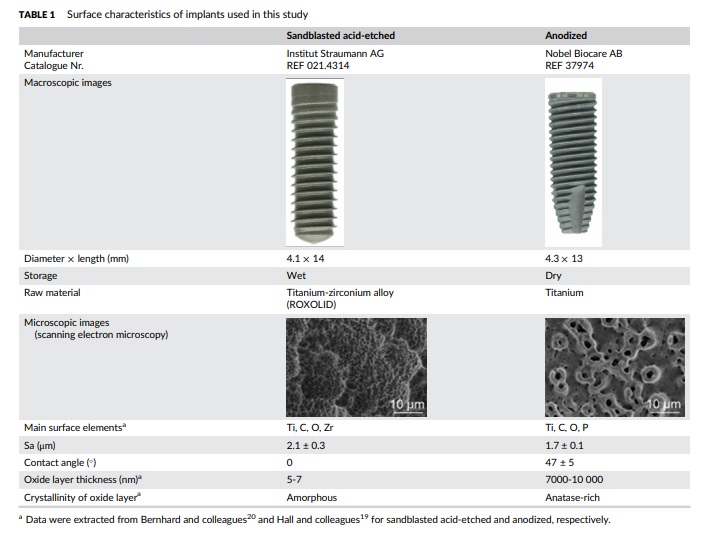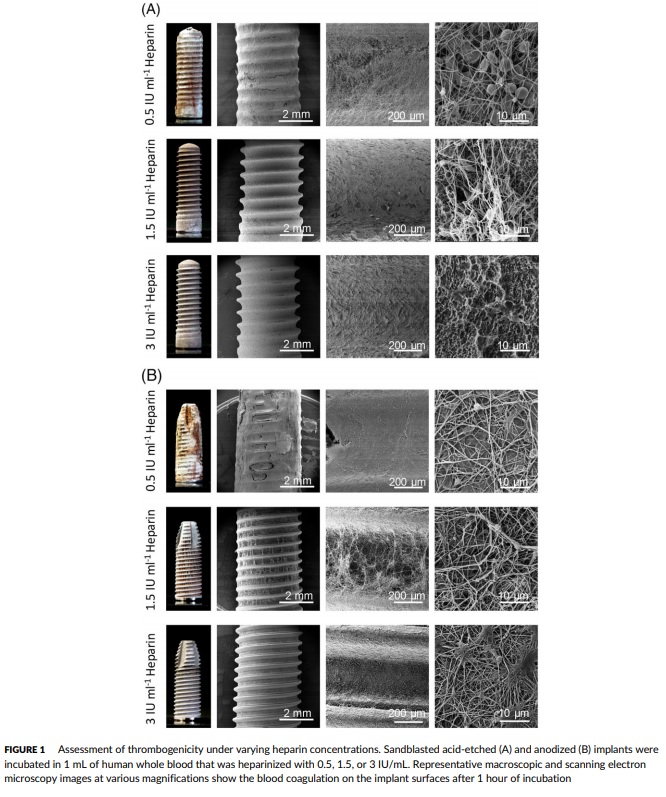Quantitative in vitro comparison of the thrombogenicity of commercial dental implants
Link: https://onlinelibrary.wiley.com/doi/pdf/10.1111/cid.12737
Download: /uploads/arquivos/Trabalho-sobre-Fibras-em-Implantes.pdf
Clin Implant Dent Relat Res. 2019;21:8–14.
Accepted: 23 January 2019
DOI: 10.1111/cid.12737
Vincent Milleret PhD1 | Philipp S. Lienemann PhD2 | Sebastian Bauer PhD3 | Martin Ehrbar PhD1
1 Laboratory for Cell and Tissue Engineering, Department of Obstetrics, University Hospital Zurich, University of Zurich, Zurich, Switzerland
2 Nobel Biocare AG, Product Development Regeneratives & Biologics, Kloten, Switzerland
3 Nobel Biocare AG, Materials Research & Surface Technologies, Kloten, Switzerland
Abstract Background:
Dental implants often have surface modifications that alter surface topography and chemistry to improve osseointegration and thereby increase treatment predictability. Surface contact-induced blood coagulation is associated with the onset of osseointegration. Purpose: To quantitatively evaluate the thrombogenicity of two commercially available dental implants that have similar surface roughness but different surface chemistry. Material and Methods: Two commercially available dental implants with anodized or sandblasted acid-etched surfaces were evaluated for thrombogenic properties. Thrombogenicity was assessed by incubating implants for 1 hour in fresh, partially heparinized blood followed by hemocyte quantification, microscopic evaluation, and quantification of thrombogenic biomarkers. Results: Fibrin coverage was significantly higher on the anodized surface compared with the sandblasted acid-etched surface (P < 0.0001). Platelet and white blood cell attachment followed a similar pattern. The increased thrombogenicity was confirmed based on a significant increase in the levels of the coagulation cascade biomarkers, thrombin antithrombin complex, and β-thromboglobulin (all P < 0.05). Conclusion: Dental implants with comparable roughness but differing surface chemistry had differing extents of blood contact activation. These data suggest that surface chemistry from anodization augments implant thrombogenicity compared with that from sandblasting and acid-etching, which could have implications for osseointegration.
KEYWORDS: coagulation, dental implant, fibrin coverage, platelet activation, surface properties, thrombogenicity


